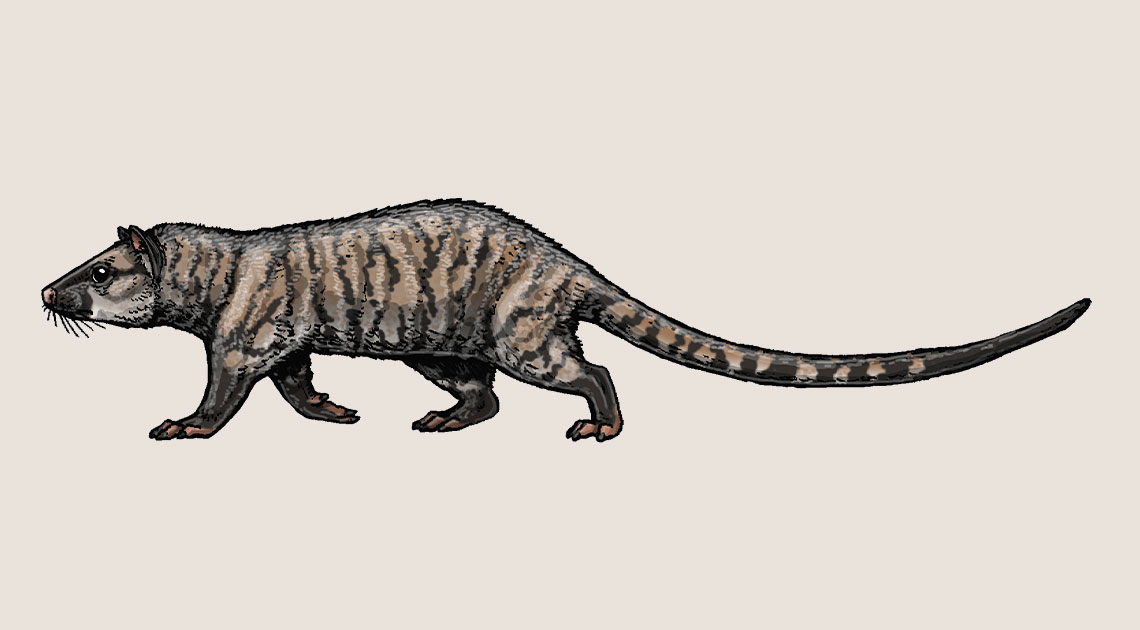
Felipe Alves Elias / PaleozoobrIllustration of Xenocynus crypticus, similar to the present-day big-eared opossumFelipe Alves Elias / Paleozoobr
Around 55 million years ago, a marsupial of a similar size to a big-eared opossum (Didelphis aurita) lived in what is now Itaboraí, a municipality in the Metropolitan Region of Rio de Janeiro. Based on tooth and dental arch analysis, researchers from the federal universities of Pernambuco (UFPE), Goiás (UFG), and Uberlândia (UFU) described a new genus and a species of metatherium, a group that includes marsupials, which they named Xenocynus crypticus (crypticus, meaning hidden in Latin, due to the fact that parts of the skull were left at Rio’s Earth Sciences Museum in the 1960s and were only rediscovered in 2017). Considered large in comparison to other metatherians, the animal is estimated to have weighed around 1.5 kilograms. It fed on invertebrates and small vertebrates, like another marsupial still found in Brazil: the big lutrine opossum (Lutreolina crassicaudata). The Itaboraí sedimentary basin was home to the most diverse metatherium fauna known in the world — to date, 43 species of metatherium have been found there. “Fifty-five million years ago, the Itaboraí basin was a tropical rainforest, similar to the Amazon today,” explains UFPE’s Leonardo Carneiro, lead author of the study (Journal of South American Earth Sciences, July).
Republish